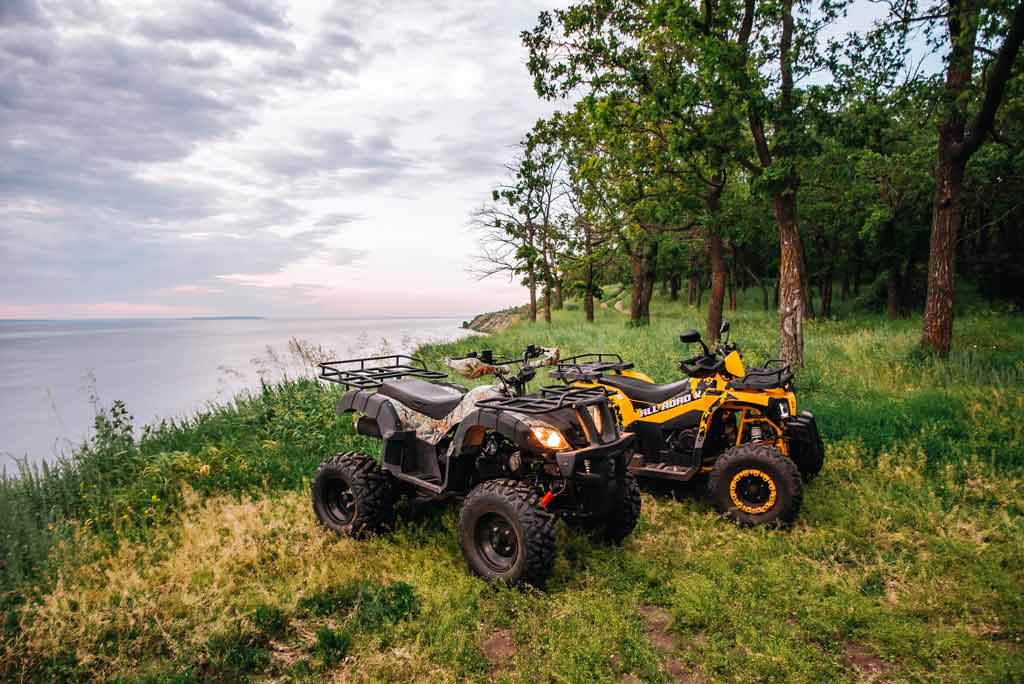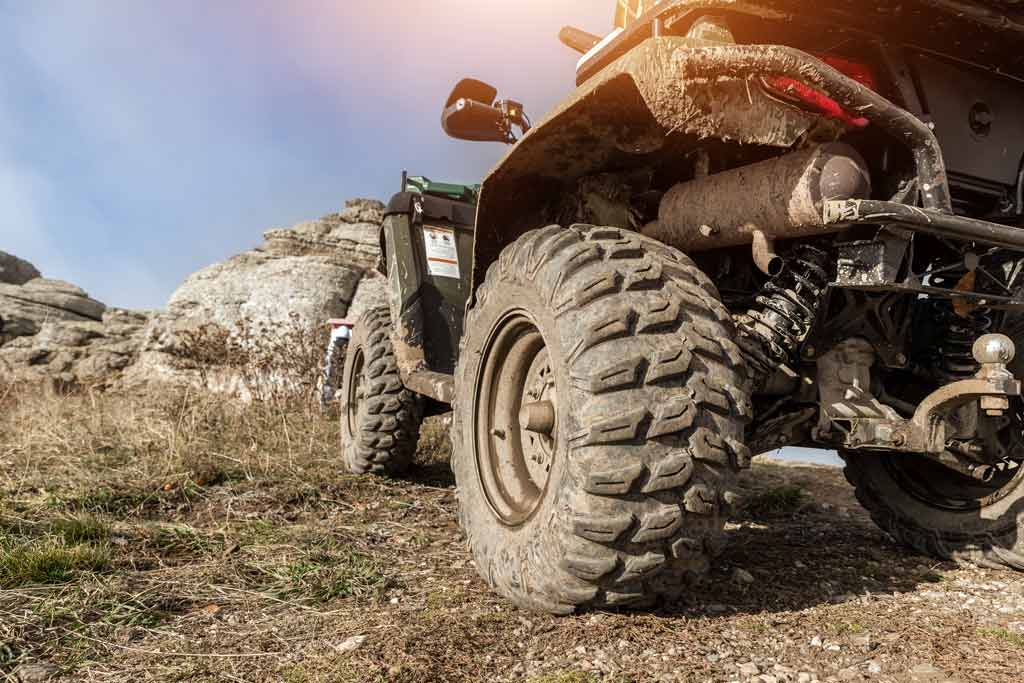ATV Tire Buying Guide: Choosing the Best ATV Tires for Your Needs


When you rely on your ATV for work, recreation, or adventure, the right set of tires can make all the difference. Whether you’re cruising along rocky trails, powering through mud, or racing across sand dunes, your tires directly impact your ATV’s performance, safety, and comfort.
This ATV tire buying guide will walk you through the essentials you need to know—helping you pick the best set of tires based on your machine, your terrain, and your riding style.
Before you start choosing ATV tires, it helps to understand what makes up a tire and why each part matters. A tire isn’t just rubber wrapped around a rim—it’s a complex piece of equipment engineered for specific conditions.
This is what an ATV tire consists of:
The tread is the part that actually contacts the ground. Different ATV tire tread patterns are designed for specific terrains—deeper lugs for mud, paddle shapes for sand, or tighter patterns for hard-packed dirt.
Ply rating refers to the number of layers within the tire. Higher ply ratings usually mean better puncture resistance and durability, especially when riding on rough or rocky ground.
Your sidewalls protect the inner part of the tire and help maintain the shape under pressure. Stronger sidewalls improve stability and puncture resistance, but they also impact how stiff or flexible your ride feels.
The bead is the edge of the tire that locks onto the rim. A strong bead ensures your tire stays securely mounted, even when running at lower air pressures for better traction.
If you’ve ever looked at a tire and seen numbers like 25×8-12, you might’ve wondered what it means. It’s simple once you break it down:
Choosing the correct ATV tire sizes is not something you want to guess on. Always match your tire size to your ATV’s specifications to avoid clearance problems, performance loss, or mechanical strain.

Not all ATV tires are built the same. What works on rocky mountain trails isn’t going to perform well in deep mud or sandy beaches. Knowing the different types helps you match your tires to the way you ride.
If you ride a little bit of everything—dirt, gravel, grass, light mud—then all-terrain tires are a solid pick. They’re designed for versatility, making them great for recreational riders who want one tire that can do it all without swapping them out every weekend.
Mud tires have deep, aggressive tread patterns that bite into soft, wet ground. They’re engineered to sling mud out from the center, keeping your wheels turning even when you’re knee-deep in the swamp.
When you’re out on the dunes, traditional tires won’t cut it. Sand tires have wide, paddle-like treads that “scoop” the sand and propel you forward instead of digging you in. They also tend to be lightweight to help you stay on top of soft terrain.
For those who race motocross or compete on packed tracks, racing tires are built for speed and responsiveness. They usually feature a flatter profile, lightweight construction, and smaller lugs to maximize grip and minimize rolling resistance.
Designed for the working ATV, utility tires are tough, heavy-duty, and built to haul loads. If your machine sees a lot of towing, plowing, or hauling on farms, ranches, or job sites, these tires will give you the durability you need.
There’s no one-size-fits-all solution when it comes to ATV tires. You need to look at where you ride, what you use your ATV for, and what kind of performance you expect.
If you spend most of your time on hard-packed trails, you’ll want a tire that grips without tearing up the path. Muddy backroads call for deep, aggressive lugs, while rocky ground demands tires with reinforced sidewalls, and if you’re carving up the dunes, sand-specific tires with paddle designs are the way to go.
Think about what your machine does day-to-day. Recreational riding often needs all-around tires. Farm work might require something heavier and more puncture resistant. Racing demands tires that maximize acceleration and cornering, and if you’re hunting, you’ll want tires that can handle rough, off-grid areas without slowing you down.
Tread isn’t just about looks. The design affects how your ATV handles acceleration, braking, and cornering. Wide, deep patterns grip soft surfaces but can slow you down on the hardpack. Tight, shallow treads let you move quickly on firm ground but won’t perform as well in the mud.
A higher ply rating generally means a stronger tire—one that’s better suited for rocky terrain, heavy loads, or aggressive riding. While a 4-ply tire might work fine for trail riding, an 8-ply or higher tire could save you from flats if you’re hitting sharper obstacles or hauling gear.
When comparing radial vs bias ply ATV tires, it’s good to know the difference. Radial tires flex more and give a smoother ride, making them ideal for longer rides and varied surfaces. Bias-ply tires are stiffer, stronger, and often cheaper—better for heavy-duty tasks where durability matters more than comfort.
Tires wear out over time, and riding on worn-out rubber puts you at risk. You’ll want to replace your ATV tires when:
Sometimes, even if there’s still tread left, tires lose elasticity and grip, especially if they’re several years old.
The price of ATV tires varies based on type, brand, ply rating, and size. Basic trail tires might cost less, while specialty tires—like those for sand or racing—usually run higher. Bigger tires for UTVs or heavy-duty work can also raise the cost.
On average, you can expect a set of four to run anywhere from a few hundred dollars to well over a thousand, depending on what you choose. Keep in mind that investing in quality tires usually saves you money in the long run by reducing the risk of blowouts, flats, and poor performance.
Choosing the right ATV tires isn’t just about looks—it’s about performance, safety, and getting the most from your machine. By understanding how different types, treads, and ply ratings work, you’ll be better equipped to find tires that match your riding style and the terrain you tackle most often.
Disclaimer: While we endeavor to keep the information on our blog up to date and correct, Maxtrade (Coolster) makes no representations or warranties of any kind, express or implied about the completeness, accuracy, reliability, suitability, or availability with respect to the website or the information, products, services, or related graphics contained on the website for any purpose. Any reliance you place on such material is therefore strictly at your own risk.
Register